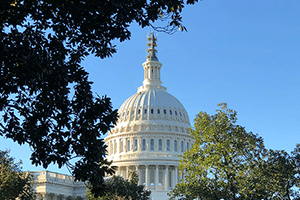Washington Pulse: Congress Approves Appropriations Bill, Containing the SECURE 2.0 Act of 2022, President’s Signature Expected

The House of Representatives has passed the Consolidated Appropriations Act of 2023, HR 2617, today with a 225-201-1 vote. Included in this bill is the SECURE 2.0 Act of 2022. Following the Senate’s approval on December 22, 2022, the bill will now be presented to the President for his signature.
The Consolidated Appropriations Act of 2023 is a $1.7 trillion fiscal year 2023 omnibus appropriations bill that contains provisions that will fund government operations for the fiscal year. The SECURE 2.0 Act is a combination of several bills that the House and Senate have been working on for months. The Securing a Strong Retirement Act of 2022 was passed by the House of Representatives earlier this year. The Senate HELP committee approved the RISE & SHINE Act, and the Senate Finance committee likewise approved the EARN Act. Attaching SECURE 2.0 to the Consolidated Appropriations Act was considered the last opportunity for passage of this retirement legislation in the current Congress.
Among the 90 provisions in the SECURE 2.0 Act, here are some of the more significant items.
- Allowing workers to participate in employer plans after two consecutive 12-month periods of 500 hours of service, beginning in 2025
- Increasing the catch-up contribution limit for select age groups
- Requiring catch-up contributions to be made on a Roth basis for those earning more than $145,000, except for SIMPLE plans
- Permitting employer contributions to be made on a pre-tax or Roth basis
- Increasing the RMD age to 73 in 2023, and age 75 in 2033
- Expanding automatic enrollment in retirement plans
- Creating a Retirement Savings Lost and Found
- Creating new emergency savings accounts linked to individual account plans
- Allowing student loan payments to be treated as elective deferrals for purposes of receiving matching contributions
- Modifying the existing saver’s credit to provide for a matching contribution to the individual’s retirement savings vehicle
- Creating a “starter 401(k) plan” with reduced contribution limits and nondiscrimination safe harbors
- Increasing the small employer startup credit to 100% for certain employers
- Increasing the age of disability onset for qualified ABLE programs to age 46
- Allowing certain rollovers to Roth IRAs from 529 college savings accounts
While many provisions will have delayed and varying effective dates, some will take effect in 2023, such as increasing the RMD age to 73 in 2023.
Additional details on the SECURE 2.0 Act will continue to be provided once this legislation is signed into law and is analyzed in detail. Visit ascensus.com for the latest information.
Click here for a printable version.


